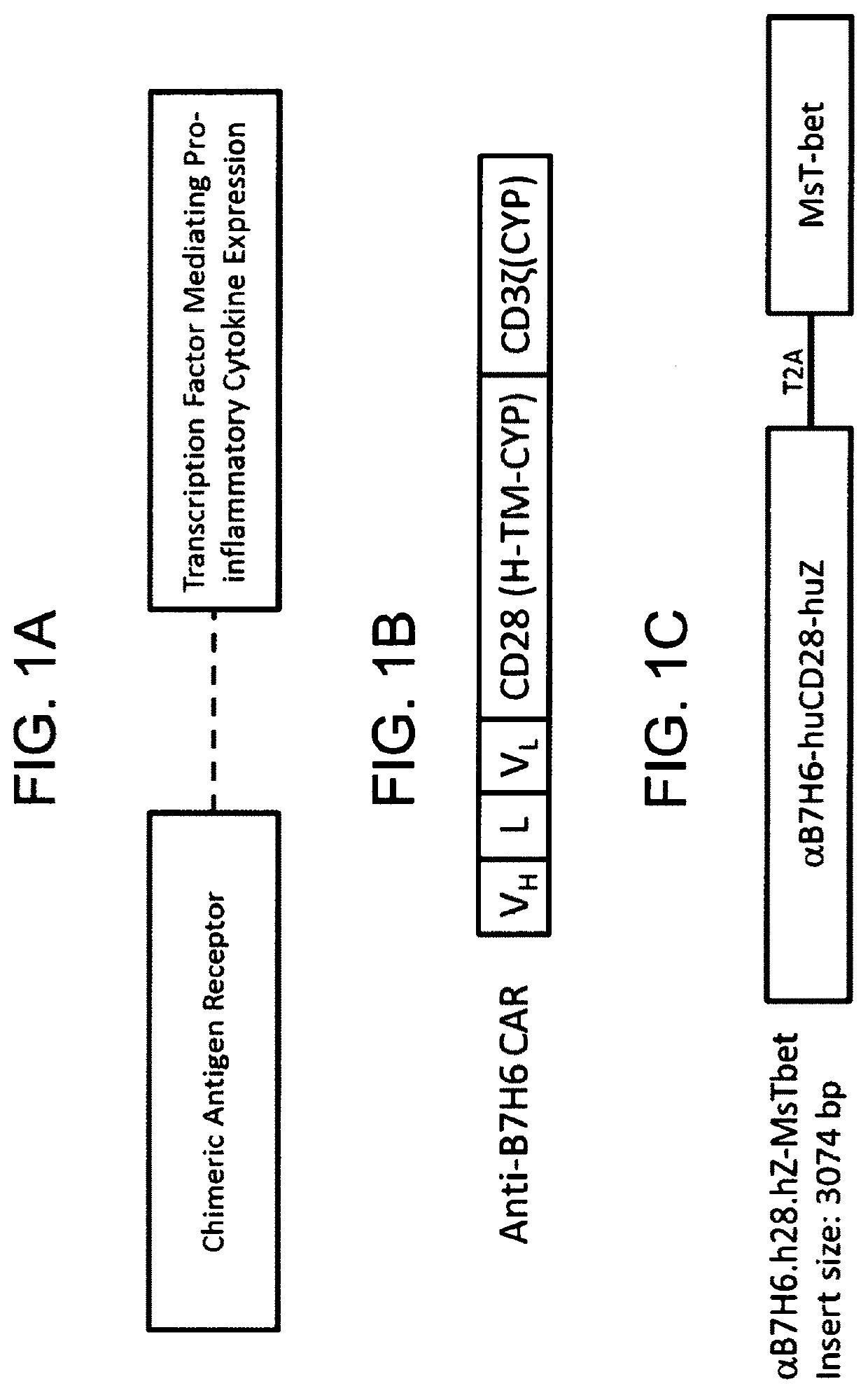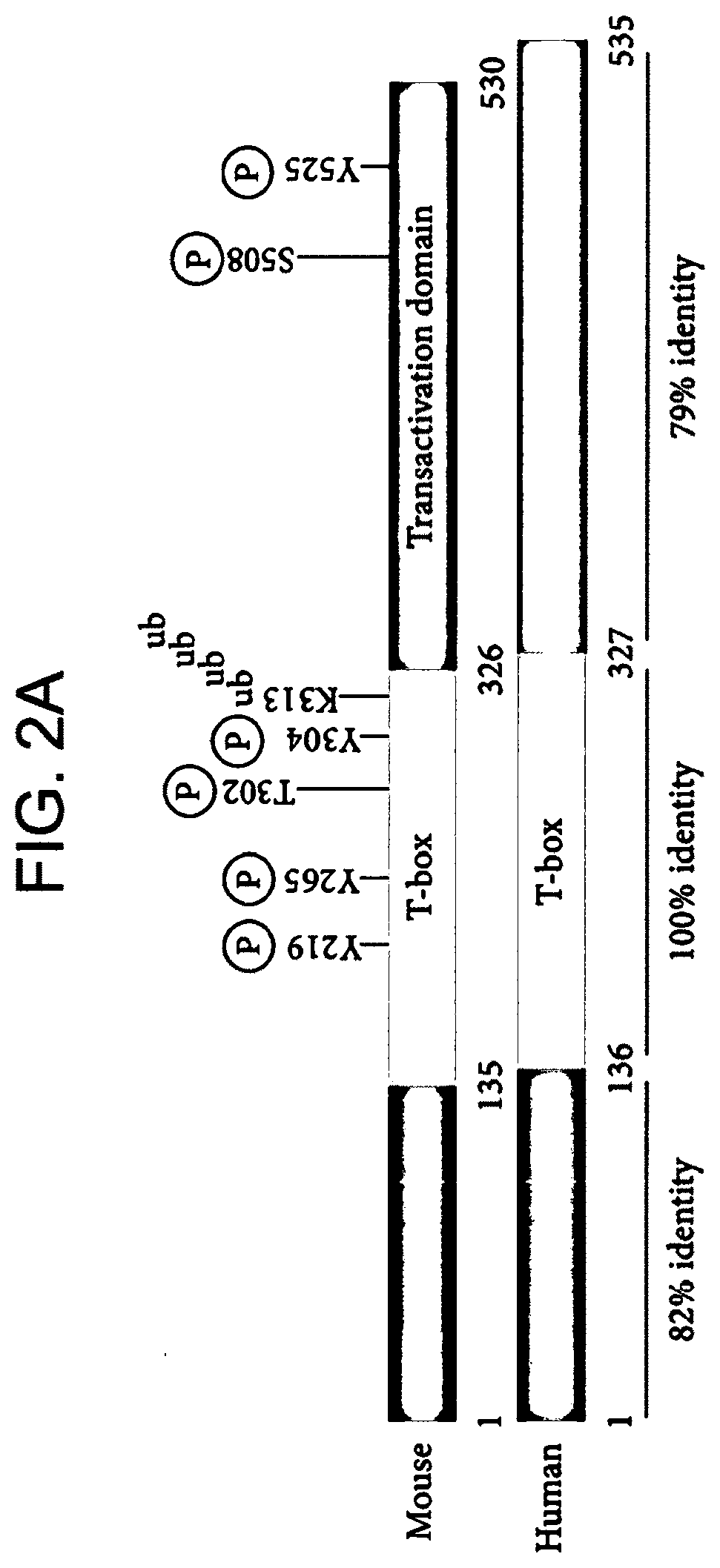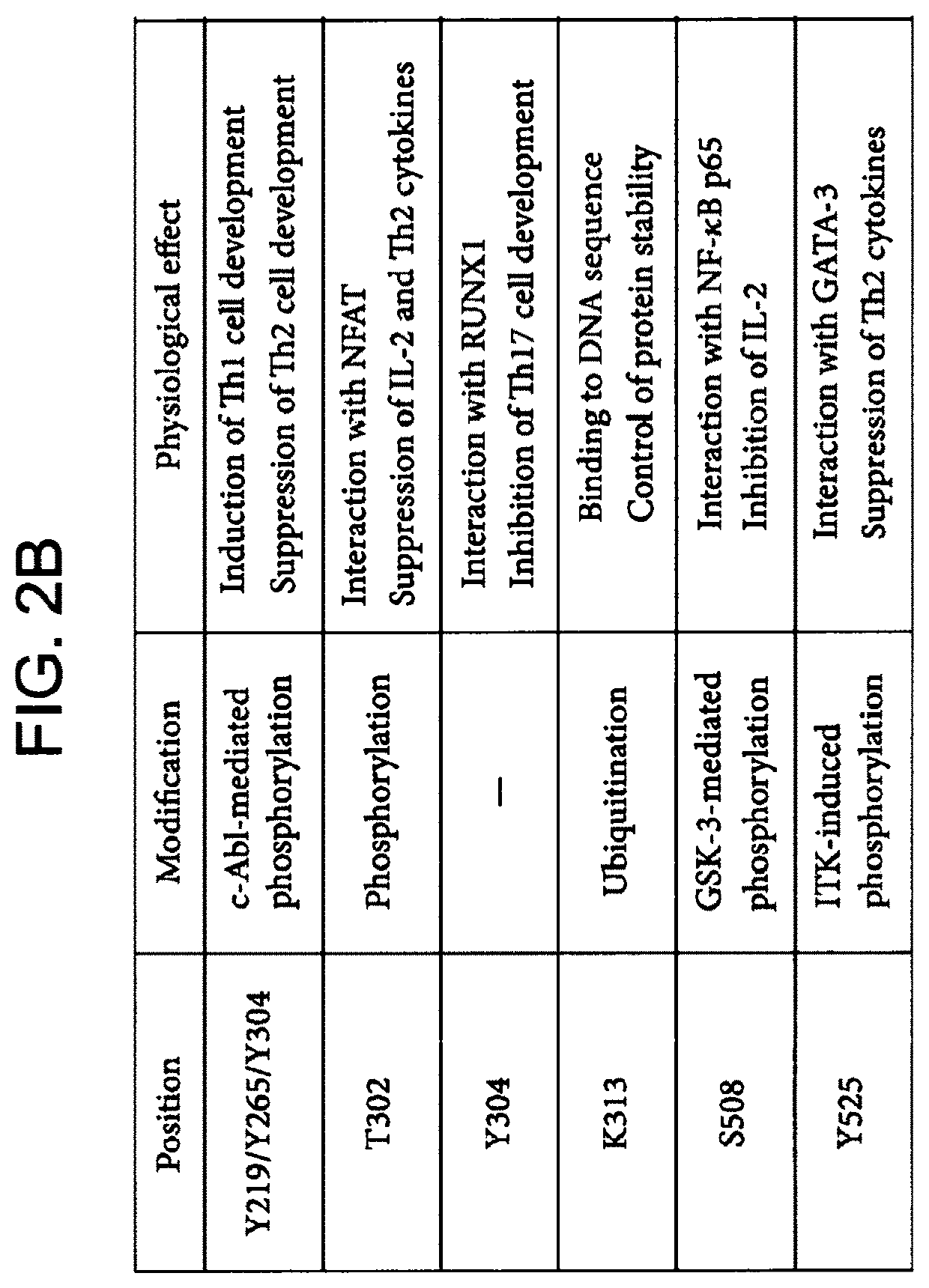Nucleic acid constructs for co-expression of chimeric antigen receptor and transcription factor, cells containing and therapeutic use thereof
a technology of chimeric antigen receptor and construct, which is applied in the field of car nucleic acid constructs and cart cells, can solve the problems of hampered expansion and persistence of car-modified t cells in vivo
- Summary
- Abstract
- Description
- Claims
- Application Information
AI Technical Summary
Benefits of technology
Problems solved by technology
Method used
Image
Examples
example 1
n of CAR Constructs and CAR-T Cells
[0436]Generation of CAR Constructs
[0437]A CAR construct having anti-B7H6 specificity and two endodomains was constructed using molecular biology and genetics techniques known in the art. The B7-H6-specific monoclonal antibody clone 47.39 was used as the basis for the antigen receptor, fused in frame to the endodomains of CD28 and CD3 zeta. (See, WO 2013 / 0169691; Wu et al., Gene Ther., 22(8):675-684, 2015; Wu et al., J. Immunol., 194(11):5305-5311, 2015; and Zhang et al., J. Immunol., 189(5):2290-2299, 2012; the disclosures of which are specifically incorporated herein by references for all purposes). A polynucleotide encoding an scFv fragment of the anti-B7H6 monoclonal antibody clone 47.39 (TZ.47) was created and fused to polynucleotides encoding CD28 and CD3 ζ, as disclosed in Wu et al. (See FIG. 1B.)
[0438]Briefly, the B7H6-specific CAR was constructed by fusing the single chain variable fragment (scFv) of an anti-B7H6 hybridoma, clone 47.39, in ...
example 2
ization of CAR-T Cell Cytokine Secretion
[0446]Mouse RMA / S tumor cells expressing B7H6 were positively sorted in Miltenyi magnetic columns with CD4 microbeads based on the manufacturer's protocol. RMA / S cells are known to possess decreased cell surface expression of major histocompatibility complex (MHC) class I molecules and be deficient in presenting endogenously synthesized influenza virus nucleoprotein (NP) to cytotoxic T cells (CTL). (See, Esquivel et al., JEM, 175(1):163-168, 1992). RMA / S tumor cells expressing B7H6 were generated by transducing the parental cell line with a dualtropic retrovirus containing the full length human B7H6 gene, followed by selection with 1 mg / mL G418 (Corning, Cambridge, Mass.) or 2 μg / mL Puromycin (Sigma-Aldrich, Saint Louis, Mo.) selection for 7 days.
[0447]Cell-free media was isolated after the 24-hour incubation and cytokine production of transduced T cells cultured with RMA-B7H6 cells was determined by multiplex analysis using known methods.
[044...
example 3
n of TZ.47 CAR in ConA-Stimulated Mouse Splenocytes with or without TBET
[0449]Mouse splenocytes were obtained by known methods. Cells were transduced with Pfb-Neo vector alone, Pfb-TZ.47-28-3z or Pfb-TZ.47-28-3z-MsTBET, using known methods, as disclosed above, and then activated with the mitogen concanavalin A (ConA) for 24 hours (FIGS. 4A-4C, left, middle, and right panels, respectively). Cells were then analyzed on day 8 for CD8 expression (FIG. 4A), MsTBET expression (FIG. 4B), and CAR expression (FIG. 4C). Cells were gated on live cells and the percent above background was plotted as shown in FIGS. 4A-4C.
[0450]The data show that co-expression of transcription factor T-bet markedly increased CAR expression in mouse CART cells activated with ConA. More specifically, 3.7% of T cells transduced with vector alone (Pfb-neo) measured positive for anti-B7H6 CAR expression (background), 11.2% of T cells transduced with vector Pfb-TZ.47-28-3z measured positive for anti-B7H6 CAR expression...
PUM
| Property | Measurement | Unit |
|---|---|---|
| molecular-weight | aaaaa | aaaaa |
| temperature | aaaaa | aaaaa |
| time | aaaaa | aaaaa |
Abstract
Description
Claims
Application Information
 Login to View More
Login to View More - R&D
- Intellectual Property
- Life Sciences
- Materials
- Tech Scout
- Unparalleled Data Quality
- Higher Quality Content
- 60% Fewer Hallucinations
Browse by: Latest US Patents, China's latest patents, Technical Efficacy Thesaurus, Application Domain, Technology Topic, Popular Technical Reports.
© 2025 PatSnap. All rights reserved.Legal|Privacy policy|Modern Slavery Act Transparency Statement|Sitemap|About US| Contact US: help@patsnap.com



